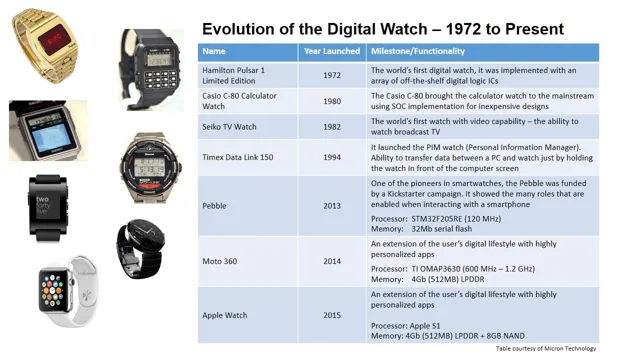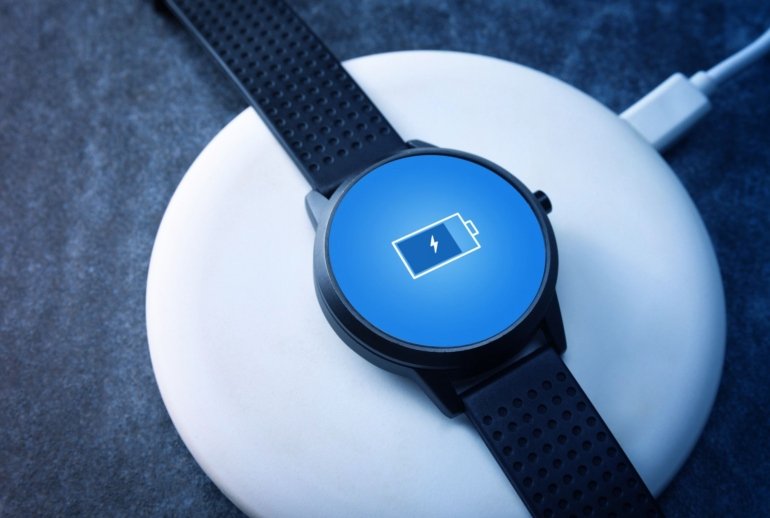Men’s watches have been an important symbol of style and sophistication for many years. From the classic pocket watches worn by gentlemen of the past to the modern timepieces worn by the modern man, the evolution of men’s watches has been fascinating to watch. Over the years, men’s watches have gone through significant transformations, both in their design and functionality.
These changes reflect not only the advancement of technology but also the ever-changing style of men’s fashion. The journey of men’s watches began with the pocket watch, which was first introduced in the 16th century. These watches were considered a luxury item and were only affordable by a few.
However, with advancements in technology, the wristwatch was introduced in the early 20th century. This change revolutionized the world of men’s watches, making these timepieces more accessible and affordable to the general public. As time went by, men’s watches underwent various transformations, reflecting changing fashion trends and technological advancements.
In the 1950s and 60s, watches became more than just timekeeping devices. They were coveted fashion accessories that embodied both style and practicality. During this era, men’s watches were designed to be sleek and sophisticated, with streamlined, minimalist designs that emphasized the watch’s function.
In recent years, men’s watches are even more advanced than ever before, with a multitude of features and capabilities. Today, watches are available to suit every taste and personality, ranging from classic analog watches to smartwatches with everything in between. No matter what your style or preference may be, there’s a men’s watch out there for you.
The evolution of men’s watches is a fascinating story. It demonstrates how fashion and technology have both driven the designs and functions of these essential accessories over the years. As we look to the future, we can expect to see even more innovative designs and technologies emerging, where the watch more than just a timekeeper but a wearable computer on your wrist.
Mechanical to Electronic Movements
Men’s watches have come a long way from the days of mechanical movements to the modern electronic ones. In the early days, watches relied on a complex system of gears and springs, which required winding to keep the watch running. However, with the introduction of quartz technology, watches became more accurate and required less maintenance.
Quartz watches use a battery to power a vibrating quartz crystal, which allows for precise timekeeping. Today, men’s watches come in a wide variety of styles and functions, from traditional mechanical watches to smartwatches that can track fitness and receive notifications from your smartphone. As technology advances, we can expect watches to continue to evolve and become even more advanced.
Overall, the shift from mechanical to electronic movements has greatly improved the accuracy and functionality of men’s watches, making them more convenient and practical for everyday use.
From Wind-Up to Battery-Powered Watches
The history of watchmaking has seen a significant shift from mechanical to electronic movements. Before the advent of electronic watches, watches were powered by a wind-up mechanism that would require the user to manually turn a knob on the side of the watch to keep it ticking. However, the limitations of manual winding led scientists and technicians to search for alternative methods to power timepieces.
This led to the production of battery-powered watches that have become the norm in modern times. Nowadays, watches come with electronic movements that not only keep accurate time but also offer a range of features such as stopwatch, countdown timer, and alarm. The evolution of watchmaking has come a long way from the basic manual winding to the advanced electronic movements.
The convenience of battery-powered watches has made them a popular choice among consumers who don’t want to worry about winding their watch daily. The shift to electronic movements is proof that technology is constantly changing and improving to make our lives easier and more convenient.

Quartz Revolution and the Swiss Watch Industry
The Swiss watch industry was a prominent player in the world market for centuries, but everything changed with the introduction of the quartz watch movement. The quartz revolution came about in the 1970s, and it completely disrupted the traditional mechanical watch industry. Instead of relying on intricate mechanical parts to keep time, quartz watches used electronic oscillators to keep time with an incredible degree of accuracy.
This meant that quartz watches were cheaper, more accurate, and easier to maintain than their mechanical counterparts. The Swiss watch industry was caught off guard by the sudden rise of quartz watches and many manufacturers struggled to adapt to the new technology. However, some manufacturers were able to survive by switching to quartz production and developing their own electronic movements.
Today, Swiss watchmakers are recognized as leaders in both mechanical and quartz watch production, thanks to their ability to innovate and adapt to changing times.
Designs and Features
Men’s watches have come a long way since their primitive beginnings. Initially, these timepieces were intended solely as functional tools to keep track of time. However, over time they have evolved to become much more than that.
Modern men’s watches come in a seemingly infinite variety of styles, designs, and features. From classic leather straps to elegant metal bands, today’s watches have something to suit every personality and taste. They also boast a range of features to cater to the needs of different individuals, including water resistance, GPS tracking, and fitness tracking capabilities.
In addition, modern men’s watches have embraced technologically advanced features such as Bluetooth connectivity and touch screens, making them an integral accessory for the modern man. Overall, men’s watches have undergone dramatic changes over time, evolving from a basic time-telling tool to a stylish, pragmatic fashion accessory that helps men stay on-the-go with their daily lives.
Watches for Specific Professions and Hobbies
When it comes to watches, specific professions and hobbies require varying designs and features. For example, divers need watches that are waterproof and have a rotating bezel to track their dive times accurately. Similarly, pilots require watches with large displays and multiple time zones to keep track of different time zones during their flights.
However, designs and features aren’t just limited to practical purposes – some watches cater to different hobbies as well! For instance, a runner may prefer a watch with a heart-rate monitor or GPS tracking, while a photographer may look for a watch with a light meter or a stopwatch to time their shots. Whatever your profession or hobby may be, there are a plethora of watch designs and features available to cater to your needs. It’s all about finding the perfect match – the one that speaks to you and helps you perform at your best.
Smartwatches and Wearable Technology
Smartwatches and wearable technology have become increasingly popular in recent times, with more and more people embracing these gadgets as part of their lives. The designs and features of these devices have come a long way since they first emerged, with the latest offerings boasting advanced functionalities and sleek aesthetics. For example, some smartwatches now allow users to access emails, texts, and notifications, while others have fitness-tracking capabilities, providing data on steps taken, calories burned, and sleep quality.
The designs have also evolved, with smartwatches now coming in a variety of shapes, colors, and sizes, catering to different style preferences. Overall, the evolution of smartwatches and wearable technology has seen an exciting array of designs and features that cater to a broad range of needs, making them ideal gadgets for tech enthusiasts and those looking to embrace the latest technologies.
Materials Used: From Gold to Titanium and Beyond
When it comes to luxury watches, the materials used can truly make all the difference. From classic gold to high-tech titanium and beyond, the possibilities are endless. But it’s not just about the materials themselves – it’s how they are used to create unique designs and features that truly set luxury watches apart.
For example, some timepieces feature intricate details like hand-engraved dials or enamel painting, while others have innovative mechanisms like tourbillons or perpetual calendars. These elements not only offer impressive functionality but also add to the watch’s overall aesthetic appeal. Whether you’re drawn to timeless elegance or cutting-edge technology, there’s a luxury watch out there for every style preference.
And with so many different materials and designs to choose from, the options are truly limitless. So why settle for anything less than the perfect timepiece?
Brand and Celebrity Influence
Men’s watches have undergone an incredible evolution over the years, and much of that has been fueled by the influence of brands and celebrities. In the early days of wristwatches, they were primarily seen as functional timepieces, designed to tell the time and little else. However, as the 20th century progressed, watches began to take on more significance as status symbols and fashion accessories.
Brands like Rolex, Omega, and Breitling came to prominence, and their watches became associated with prestige, quality, and luxury. At the same time, celebrities began to play an increasingly important role in shaping men’s watch trends. Actors, musicians, and athletes began wearing specific brands or styles, driving demand and inspiring imitations.
Today, men’s watches are available in a staggering array of designs and styles, catering to every taste and budget. Whether it’s a simple Timex or a high-end Patek Philippe, the watch a man chooses to wear says a lot about his personality, style, and aspirations.
The Role of Luxury Brands in Watch Design
Luxury watch brands have a significant influence on the design of watches, and this is only amplified by celebrity endorsements. High-end watches have long been associated with luxury, power, and elegance. As a result, top-tier luxury brands hold great importance in the high-end watch industry.
These brands are known for their signature features, quality build, and, most importantly, the power they hold in the world of fashion and style. In the modern watch market, celebrity endorsement permits prominent brands to reach a broader audience, and by extension, amplify their brand message. When a celebrity sports a specific watch brand, people follow suit, and the brand gains a new following.
The power of the celebrity and brand, along with the message the watch conveys, blends seamlessly to create a more significant impact globally. Ultimately, luxury watch brands have not only been able to set the standard in watchmaking, but a brand’s message and celebrity influence also plays a crucial role in the design of luxury watches.
Celebrity Collaboration and Endorsements
Brand and Celebrity Influence: The Power of Collaborations and Endorsements Celebrity collaborations and endorsements have become a standard marketing tactic for brands looking to increase their consumer reach and boost sales. The allure of a brand-customer connection via a celebrity is hard to resist, primarily due to the aspirational factor associated with famous personalities. From fashion and beauty to tech and sports, famous faces can help drive sales and increase brand recognition.
When a celebrity endorses a product, it does more than just generate buzz. It creates an emotional connection between the consumer and the brand, leveraging the celebrity’s influence to gain consumer trust and purchase intent. The power of celebrity collaborations lies in the fact that they can impact consumer behavior and buying decisions.
Consumers want to be associated with their favorite celebrities, whether that is through the clothes they wear or the products they use. Seeing a celebrity they love using a product is often enough to convert a potential customer into a buyer. Social media has also played a significant role in making celebrity collaborations more natural and authentic.
The camaraderie and connective power that social media offers make it possible for brands to tap into their target audience’s needs and preferences. By collaborating with a celebrity, brands can establish themselves as innovative, fashionable, and aspirational, which, in turn, can drive sales and boost their overall bottom line. In conclusion, the influence of celebrities on brand endorsements and collaborations is undeniable.
It’s not just about the money and fame; it’s about the emotional connection that famous personalities can create with consumers. When a brand partners with a celebrity, it not only gains access to a broader audience but also builds trust, credibility, and social proof. Brands must be strategic in their collaborations and focus on selecting the right celebrity that aligns with their brand values and resonates with their target audience.
With the right partnership, a celebrity endorsement can create a significant impact on a brand’s performance, establishing them as a top player in their industry.
Future Innovations in Men’s Watches
Men’s watches have come a long way since their inception. From basic timekeeping devices to complex wrist wearables, the evolution of men’s watches has been remarkable. Advances in technology and engineering have greatly impacted the design and functionalities of watches.
Today’s watches are not just for telling time, but they can also track fitness and monitor health, control smart home devices, and even make payments. However, this is just the beginning. The future of men’s watches looks promising, with more innovative features expected to be added.
For instance, virtual assistants like Siri and Alexa could be incorporated into watches, making them even more connected to our daily lives. Moreover, smart sensors that can detect temperature changes, pollution levels, and other environmental factors could be added to watches. With technological advancements, the possibilities for the future of men’s watches are endless, and they are sure to become even more personalized to user needs.
Conclusion
In conclusion, men’s watches have come a long way from being mere timekeeping devices to serving as stylish accessories and status symbols. From the simplicity of sundials to the complexity of smartwatches, the evolution of men’s watches reflects the ingenuity, innovation, and cultural changes of humanity. As horology technology continues to advance, only time will tell what new features and designs men’s watches will have in store for us.
But one thing is for sure, the evolution of men’s watches has been a timeless journey of craftsmanship, style, and functionality, making them an essential part of men’s fashion and lifestyle alike!”
FAQs
What was the first men’s watch ever made and when?
The first men’s watch was made in the early 16th century by Peter Henlein in Germany.
How did men’s watches change during the industrial revolution?
During the industrial revolution, men’s watches evolved from being luxury items to mass-produced items that were more affordable for the average person.
How have men’s watches become more technologically advanced?
Men’s watches have incorporated advanced technology such as GPS, Bluetooth, and fitness tracking in recent years.
What materials have been used to make men’s watches throughout history?
Men’s watches have been made from a variety of materials including gold, silver, stainless steel, and more recently, ceramic and titanium.



